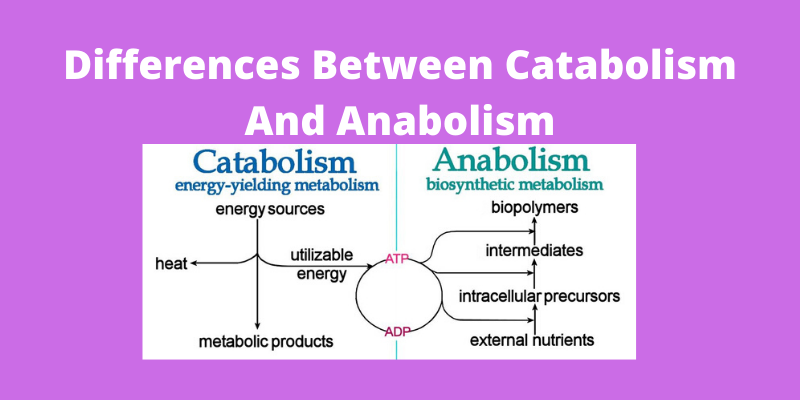Which of the Following Is a Feature of Catabolic Reactions
D involve consumption of energy. An enzyme is consumed in its reaction.

Which Of The Following Is A Catabolic Reaction
Proteins being made through the process of translation.

. The process is an exergonic process in which the energy is released due to the breaking of the bonds of the larger complex molecules. A feature of catabolic reactions is that they involve release of energy. Occur only in the mitochondria.
A occur only in mitochondria. Intracellular digestion refers to the breaking of the larger molecules. Correct option is C Metabolism refers to series of reactions in which product of one reaction becomes reactant for the next one.
Glycolysis is an example of a catabolic pathway. Glucose formation from glycerol B. Doccur only during loss of body weight.
A feature of anabolic reactions is that they involve consumption of energy Which of the following is an example of a catabolic reaction. Catabolic are associated with the release of energy and energy production. The formation of glycogen by the liver cell is an example of a.
A culture of Acetobacter is fermenting apples to produce apple cider vinegar. An enzyme binds to its substrate. Cyanobacteria using the suns energy to synthesize glucose from carbon dioxide and water.
They often involve hydrolysis of macromolecules. UNCNRPW1071 - 71 - Identify the nutrients involved in energy metabolism and the high-energy compound that captures the energy released during their breakdown. Which of the following is an example of a catabolic reaction.
Biology questions and answers. 71 Chemical Reactions in the Body LEARNING OBJECTIVES. A very good example is Glycolysis which involves the break down of Glucose while using O_2 into.
The catabolic processes are the reactions in which the large complex molecules are broken down to form the smaller molecules. It includes catabolism degradative pathways and anabolism synthetic pathways. Boccur only in mitochondria.
It results in the breakage of large or medium molecules into smaller molecules. Involve the release of energy. Glucose formation from glycerol b.
Which two of the following are correct about the catalytic function of enzymes. Which of the following is an example of a catabolic reaction. The process is an exergonic process in which the energy is released due to the breaking of the bonds of the larger complex molecules.
Lithotrophs use inorganic substrates. Proteins being made through the process of translation. Cyanobacteria using the sun s energy to synthesize glucose from carbon dioxide and.
Gram positive bacteria making peptidoglycan to incorporate in their cell walls. An enzyme is incorporated into the reaction product. Ainvolve release of energy.
All of the above. They are divergent processes in which a few precursors form a wide variety of polymeric products. An enzyme is used once and then degraded.
The exact nature of catabolic reactions differs from organism to organism and can be classified based on their sources of energy and carbon which are as given below- Organotrophs use organic sources as a source of energy. A feature of catabolic reactions is that they. Which of the following is an example of a catabolic reaction Which of the following is an example of a catabolic reaction.
In the adult body food energy not. Biological reactions that involves the breakage of large molecules into smaller ones. At any moment both reactions are occurring.
Intercellular digestion is the processes. A feature of catabolic reactions is that they. They often produce NADH or FADH2 C.
The catabolic processes are the reactions in which the large complex molecules are broken down to form the smaller molecules. Albumin formation from amino acids D. Pyruvate formation from glucose The hydrolysis of ATP that often occurs simultaneously with the synthesis of many compounds is an example of coupled reactions.
A feature of catabolic reactions is that they. Cinvolve consumption of energy. Palmitic acid formation from acetate.
1 point Which of the following is a characteristic feature of anabolic pathways. B occur only during loss of body weight. Phototroph uses sunlight as chemical energy.
Involve consumption of energy. Occur only during loss of body weight. O They decrease the entropy of the organism and its environment.
Digestion is the process in which complex compounds are broken down into the simpler form. An enzyme participates in changes to the substrate. Collectively all of these reactions are called your metabolism.
C involve release of energy. Anabolic reactions are associated with growth. Hence option C is the correct answer.
The word metabolic means biochemical. They are usually spontaneous chemical reactions They consume energy to build up polymers from monomers They release energy by degrading polymers to monomers 110 Which of. AIEEE Bank Exams.
Urea formation from an amino acid C. They serve to generate energy. C involve release of energy.
Intracellular digestion refers to the breaking of the larger molecules. Which of the following is an example of a catabolic reaction. Catabolic reactions or catabolism is a type of reaction that occurs in living organisms or living cells.
A feature of catabolic reactions is that they. The two types are called anabolic and catabolic. The break down of glycogen is glucose and is a catabolic reaction.
Lactose formation from glucose c.

Anabolic And Catabolic Pathways Biology For Majors I

Differences Between Catabolism And Anabolism In Human Body

Solved Question 2 1 Pts A Feature Of Catabolic Reactions Is Chegg Com
Comments
Post a Comment